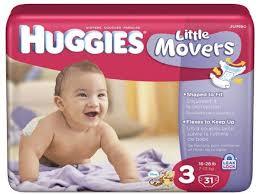Let’s first write a simple Image Recognition Model using Inception V3 and Keras
Image Recognition#TENSORFLOW #KERAS #NN #NEURALNET #INCEPTIONV3 #MACHINELEARNING #DEEPLEARNING
Our brains make vision seem easy. It doesn't take any effort for humans to tell apart a lion and a jaguar, read a sign, or recognize a human's face. But these are actually hard problems to solve with a computer: they only seem easy because our brains are incredibly good at understanding images.
SEVERAL PRE-TRAINED NETWORKS :
- VGG16, VGG19, ResNet50, Inception V3, and Xception
State-of-the-art deep learning image classifiers in KerasKeras ships out-of-the-box with five Convolutional Neural Networks that have been pre-trained on the ImageNet dataset:VGG16VGG19ResNet50Inception V3Xception
Inception V3
The goal of the inception module is to act as a “multi-level feature extractor” by computing 1×1, 3×3, and 5×5 convolutions within the same module of the network — the output of these filters are then stacked along the channel dimension and before being fed into the next layer in the network.The original incarnation of this architecture was called GoogLeNet, but subsequent manifestations have simply been called Inception vN where N refers to the version number put out by Google.
LET'S WRITE A NICE LITTLE PROGRAM TO CLASSIFY IMAGES
What are we going to Detect?
What does this Image say to a Computer?

Let's check it out :
import numpy as npfrom keras.preprocessing import imagefrom keras.applications import inception_v3
# Load pre-trained image recognition modelmodel = inception_v3.InceptionV3()
# Load the image file and convert it to a numpy arrayimg = image.load_img('../input/Huggies.jpg', target_size=(299, 299))input_image = image.img_to_array(img)
# Scale the image so all pixel intensities are between [-1, 1] as the model expectsinput_image /= 255.input_image -= 0.5input_image *= 2.
# Add a 4th dimension for batch size (as Keras expects)input_image = np.expand_dims(input_image, axis=0)
# Run the image through the neural network
predictions = model.predict(input_image)
# Convert the predictions into text and print thempredicted_classes = inception_v3.decode_predictions(predictions, top=1)imagenet_id, name, confidence = predicted_classes[0][0] #Let's print what the DL Program sayprint("This is a {} with {:.4}% confidence!".format(name, confidence * 100))
Output: This is a diaper with 95.24% confidence!
Our brains make vision seem easy. It doesn't take any effort for humans to tell apart a lion and a jaguar, read a sign, or recognize a human's face. But these are actually hard problems to solve with a computer: they only seem easy because our brains are incredibly good at understanding images.
SEVERAL PRE-TRAINED NETWORKS :
- VGG16, VGG19, ResNet50, Inception V3, and Xception
State-of-the-art deep learning image classifiers in KerasKeras ships out-of-the-box with five Convolutional Neural Networks that have been pre-trained on the ImageNet dataset:VGG16VGG19ResNet50Inception V3Xception
Inception V3
The goal of the inception module is to act as a “multi-level feature extractor” by computing 1×1, 3×3, and 5×5 convolutions within the same module of the network — the output of these filters are then stacked along the channel dimension and before being fed into the next layer in the network.The original incarnation of this architecture was called GoogLeNet, but subsequent manifestations have simply been called Inception vN where N refers to the version number put out by Google.
LET'S WRITE A NICE LITTLE PROGRAM TO CLASSIFY IMAGES
What are we going to Detect?
What does this Image say to a Computer?

Let's check it out :
import numpy as npfrom keras.preprocessing import imagefrom keras.applications import inception_v3
# Load pre-trained image recognition modelmodel = inception_v3.InceptionV3()
# Load the image file and convert it to a numpy arrayimg = image.load_img('../input/Huggies.jpg', target_size=(299, 299))input_image = image.img_to_array(img)
# Scale the image so all pixel intensities are between [-1, 1] as the model expectsinput_image /= 255.input_image -= 0.5input_image *= 2.
# Add a 4th dimension for batch size (as Keras expects)input_image = np.expand_dims(input_image, axis=0)
# Run the image through the neural network
predictions = model.predict(input_image)
# Convert the predictions into text and print thempredicted_classes = inception_v3.decode_predictions(predictions, top=1)imagenet_id, name, confidence = predicted_classes[0][0] #Let's print what the DL Program sayprint("This is a {} with {:.4}% confidence!".format(name, confidence * 100))
Output: This is a diaper with 95.24% confidence!

Published on September 22, 2017 23:30
No comments have been added yet.



